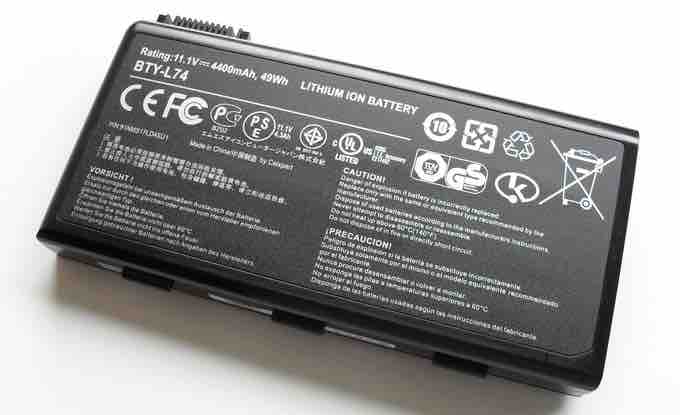Lithium-ion batteries (Li-ion batteries, or LIBs) are a family of rechargeable batteries in which lithium ions move from the negative electrode to the positive electrode during discharge. The ions follow the reverse path when the battery is charging. Li-ion batteries use a lithium compound as the electrode material.
Uses for Lithium-Ion Batteries
Lithium-ion batteries are common in consumer electronics. They are one of the most popular types of rechargeable battery for portable electronics because they have one of the best energy densities and only a slow loss of charge when not in use.

Laptop lithium-ion battery
The lithium-ion battery is good for use in portable electronics, including laptops.
Beyond the field of consumer electronics, LIBs are also growing in popularity for military, electric vehicle, and aerospace applications. Research is yielding a stream of improvements to traditional LIB technology, focusing on energy density, durability, cost, and safety.
Types of Lithium-Ion Batteries
Chemistry, performance, cost, and safety characteristics vary with the type of LIB. Handheld electronics mostly use LIBs based on lithium cobalt oxide (LCO), which offer high energy density but have well-known safety concerns, especially when damaged. Lithium iron phosphate (LFP), lithium manganese oxide (LMO), and lithium nickel manganese cobalt oxide (LiNMC) batteries offer lower energy density but longer lives and inherent safety. These chemical compositions, or chemistries, are being widely used for powering electric tools and medical equipment.
Charging and Discharging
The three participants in the electrochemical reactions in a lithium-ion battery are the anode, the cathode, and the electrolyte. Both the anode, which is a lithium-containing compound, and the cathode, which is a carbon-containing compound, are materials into which lithium ions can migrate. The electrolyte is a lithium salt in an organic solvent. When a lithium-based cell is discharging, the positive lithium ion is extracted from the cathode and inserted into the anode, releasing stored energy in the process. When the cell is charging, the reverse occurs.
Materials for Cathodes and Anodes
The most commercially popular cathode material is graphite. The anode is generally one of three materials: a layered oxide (such as lithium cobalt oxide), a polyanion (such as lithium iron phosphate), or a spinel (such as lithium manganese oxide). The electrolyte is typically a mixture of organic carbonates, such as ethylene carbonate or diethyl carbonate, containing complexes of lithium ions.
In a lithium-ion battery, the lithium ions are transported to and from the cathode or anode. The transition metal, cobalt (Co), oxidizes from Co3+ to Co4+ during charging and reduces from Co4+ to Co3+ during discharge.